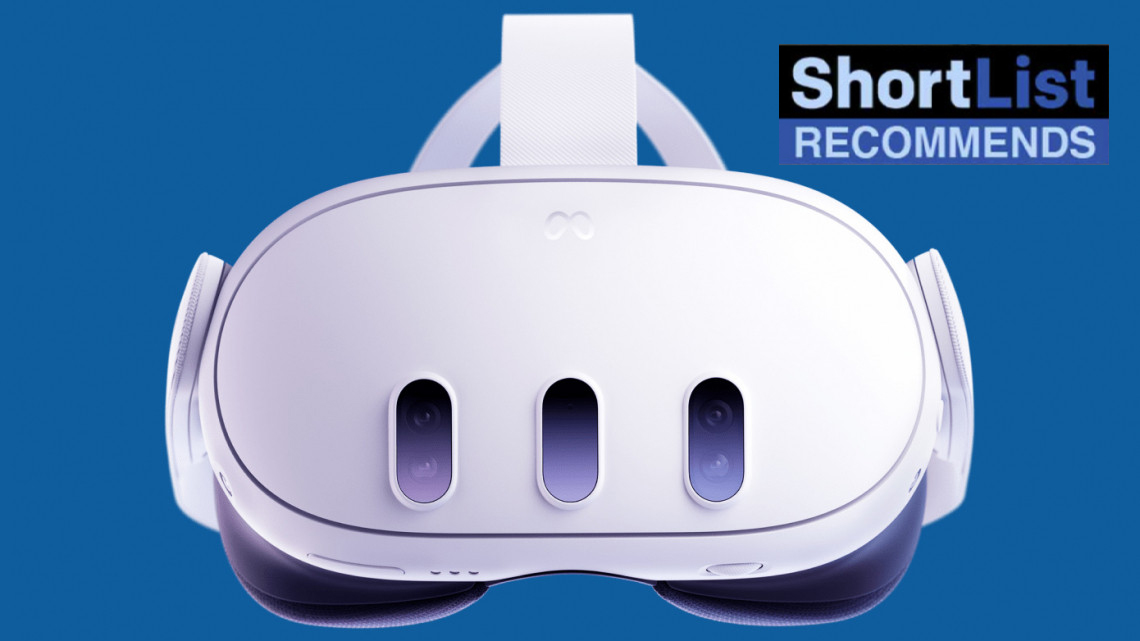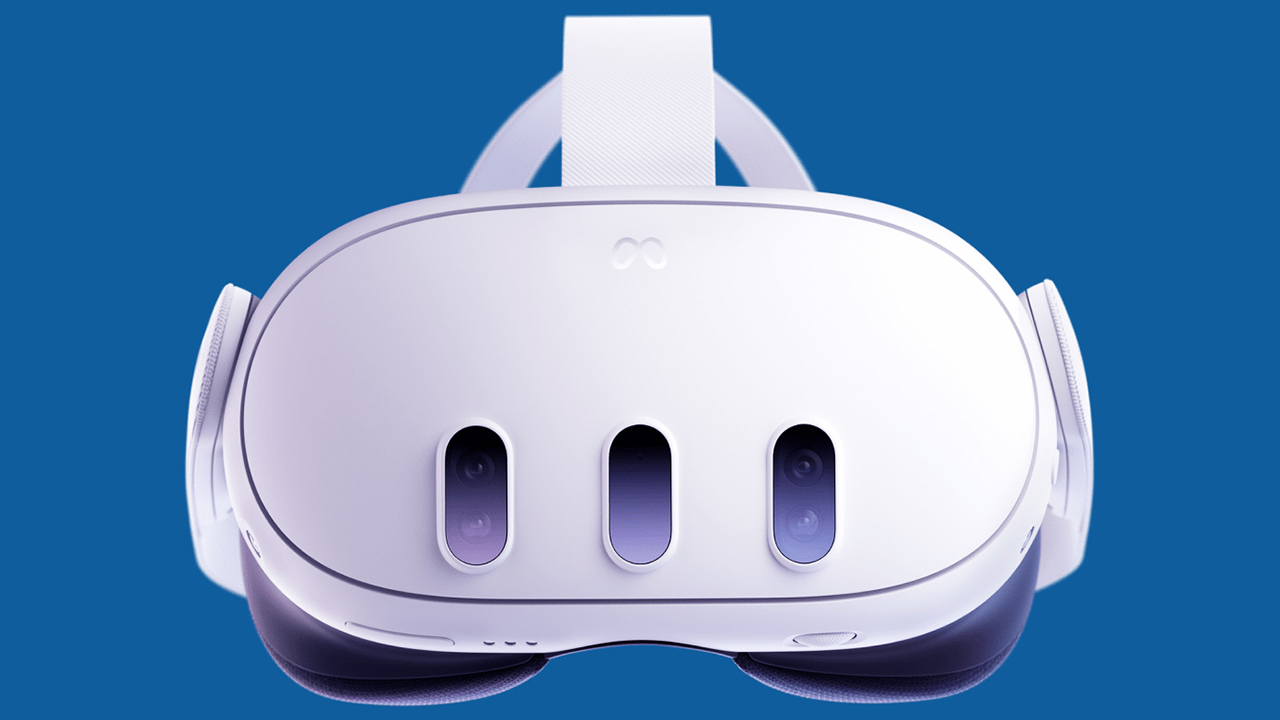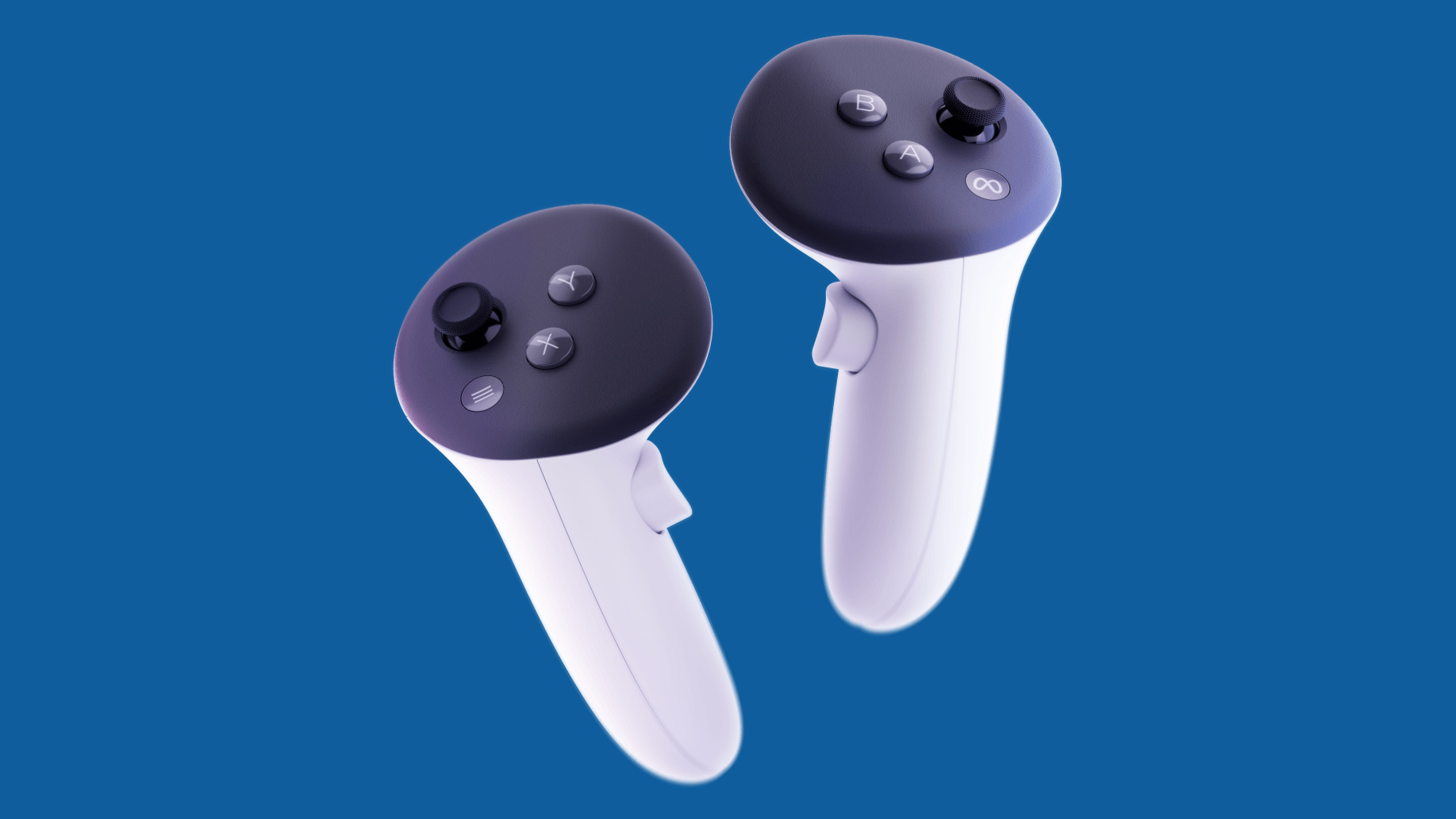
Let’s say what we’re all thinking at the top: the metaverse is still a bit crap, isn’t it? Good news: the Meta Quest 3 isn't.
We remain sceptical Mark Zuckerberg will one day have us all dancing to Basement Jaxx in a virtual reality nightclub or chairing board meetings with a headset, but his company leads the way when it comes to accessible and user-friendly VR hardware.
Unlike the PS VR 2 there's no need to hook the Meta Quest 3 up to a console. There are no annoying cables, no need to spend £400-plus on a PS5 before you even get started.
Meta may have entered the high-end headset market with the Quest Pro, but its bread and butter remains the Quest series. Its relatively affordable pricing, all-in-one appeal, solid specs and large library of apps and games — a killer combo.
The Quest 3 seemingly signals something of a directional shift for Meta. It’s still a brilliant standalone VR headset, but significant upgrades to the passthrough tech means mixed reality experiences - where elements of the virtual world are plonked into the physical one we call our own - are now a big part of the offering. We’ve been testing the Meta Quest 3 for several weeks now, and here’s what we think.
1. Mixed reality: The tech is there, now we need the apps
If you used the Meta Quest 2 you’ve already experienced passthrough, which is where cameras on the exterior of the device show you a view of your room through the headset. But the feed was strictly grayscale and pretty fuzzy, so you wouldn’t use it for any other reason than removing yourself from the virtual world when you needed to.
Get exclusive shortlists, celebrity interviews and the best deals on the products you care about, straight to your inbox.

With the Quest 3, passthrough becomes more than a safety feature. Meta has equipped its new headset with two RGB cameras and a depth sensor that deliver full colour passthrough. It's a huge step up from what we had before.
The improved resolution means we can just about make out text on our phone, and if it wasn’t for the strange looks, we’d be quite happy to potter about the living room without taking the thing off. The headset can map out your surroundings with impressive speed and precision, so you no longer need to physically draw an outline of your intended playspace.
This new sensor architecture also means mixed reality is now possible on the Quest 3. It will be a while before developers really start to harness the tech for worthwhile experiences, but the apps we were able to test at launch are a decent showcase for what it can do.
In First Encounters, your room is invaded by a horde of little puffball aliens that you zap from every direction. We were quite impressed with how they’d emerge from holes in the wall and from behind the sofa, with the headset doing a good job of accurately mapping out the space. It’s no more than a tech demo, but it’s a fun one.
We also messed around with the mixed reality update to Les Mills Bodycombat, the intensive martial arts-inspired workout app, which now allows you to punch away while being aware of what’s around you, making it mercifully less likely that your TV ends up on the receiving end of an uppercut.
In Demeo, you can play augmented reality board games in your kitchen, a decidedly less dusty affair than fishing a real one from the attic. It’s early days for mixed reality, but just being capable of it gives the Meta Quest 3 an advantage over the likes of PS VR 2.
2. Resolution and power: Sharper than ever
A quick glance at the spec sheet tells you the Meta Quest 3 is a sizeable step up from its predecessor, and it’s immediately noticeable with the headset strapped to your face, too. The second generation Snapdragon XR2 under the hood makes everything feel faster, loading times shorter, and games look better.
The spacefaring puzzle game Red Matter 2 is one game that has already been updated to take advantage of the Quest 3’s power boost, with crisper 4K textures, dynamic shadows and improved resolution across the board.

And it’s not just the processor that’s better. Behind the new pancake lenses are two LCD panels that boast a resolution of 2,064 x 2,208 pixels per eye, which is nearly a 30% improvement on the Quest 2.
The field of view has been increased too. The PS VR 2’s OLED displays may still have the edge, and you shouldn’t expect images that close to your eyes to look anywhere near as sharp as they do on your 4K TV, but we were really impressed by the Quest 3’s visual prowess.
Perhaps the lack of eye tracking, which is currently all the rage in VR, will hurt the Quest 3 in the long run, but if you’re coming from a Quest 2 or older you will definitely appreciate the upgrades.
3. Design and Controllers: Size matters
We’re not sure any VR headset has earned the right to be called iconic yet, but the muted all-white minimalism of the Quest 2 meant it probably got the closest to dat. The new one looks quite different.
The RGB cameras and depth sensor responsible for all the passthrough wizardry sit on the front of the Quest 3 visor in what is a rather intimidating-looking three-sensor array, but you might like the more sci-fi aesthetic of Meta’s latest headset. What you’ll almost certainly like is the slimmer profile (40% to be exact), even if it actually weighs slightly more than the Quest 2.

The Meta Quest 3, like its predecessor, is one of the more comfortable VR headsets out there, with plenty of padding, easily adjustable straps and well-balanced weight distribution. There’s also now a dial on the button of the visor to adjust the interpupillary distance (IPD) without removing the headset.
Meta has once again gone for integrated speakers, which are louder, clearer and bassier than before. Audiophiles will no doubt poke holes, but not needing headphones makes already toasty longer VR sessions feel a bit less claustrophobic.
The controllers have also been redesigned for Quest 3. Now called Touch Plus, the first thing you’ll notice is the tracking rings have been lopped clean off, resulting in controllers that you can bring closer together.
They feel a bit more like extensions of your hands and less like, well, bulky controllers. We did worry that this would affect the tracking accuracy, but the Quest 3 had no problem keeping up with our wild flailing.

The new controllers also feature improved haptics to make interacting with virtual objects feel more convincing. They’re not quite as good as the DualSense-aping tech in the PS VR 2 controllers, but they’re definitely an improvement.
Quest 3 also supports hand tracking out of the box, which you can switch to by double tapping the Touch Plus controllers before setting them down. While undeniably futuristic, hand gestures aren’t as precise as the controllers, and you won’t find loads of games that utilise it well yet.
4. Still best for games
If you’re buying a VR headset that costs north of £400 you’re going to want stuff to do on it, and this is where Meta undoubtedly reigns supreme. The Meta Quest 3 (unlike PS VR 2) is fully backwards compatible with the Quest 2 library of more than 500 games.
Over time a lot of those games and apps will be updated to take advantage of the new headset’s mixed reality capabilities and increased power, and a fair few already have been.

We’ll soon be updating our best Meta Quest games list which will take the Quest 3’s offering into consideration. But the likes of Beat Saber, Moss, Superhot, Resident Evil 4 and Eleven Table Tennis - all stone cold VR classics - are still brilliant fun.
As well as a handful of mixed reality apps, we enjoyed messing around in the upcoming Out of Scale: A Kurzgesagt Adventure, a wacky and brightly colourful science game that lets you shrink as small as a molecule and grow as large as a mountain in your mobile scale lab.
Let’s just say we weren’t quite prepared for elephant-sized ants. This game will also have a mixed reality mode at launch, allowing you (if you dare) to let the aforementioned giant insects wander into your front room with your other half none the wiser. As can zombies in a new MR mode coming to Drop Dead: The Cabin, which we can only describe as your very own Shaun of the Dead simulator.
There’s a lot to play on the Meta Quest 3, especially if this is your first VR headset. The issue is that the games remain expensive for what they are, which is usually quickfire casual experiences rather than games you want to play for hours on end.
Meta did launch a subscription service this year, Meta Quest+, which gets you access to two titles a month. But it's not the true Xbox Game Pass for VR we really want. And while there are plenty of more lifestyle-y metaverse apps, with Meta’s own Horizon Worlds being the most fully-featured, they are depressingly empty and therefore not places you’ll want to spend a lot of time hanging out in. If this is to be the future, the future is still a long way off.
5. Same battery, more storage
We’re less worried about battery life on VR headsets than we are with smartphones and handheld consoles, because nobody sensible wants to be in VR for more than an hour or so at a time, and the Quest 3 will last about twice as long as that on a full charge.
Sure you’ll need to plug it in a fair bit (charging takes roughly two hours), but it’s unlikely to die on you mid-Beat Saber session unless you’re really putting the time in. And the controllers? They continue to run on AA batteries (included) and last for ages.
As for storage, you get 128GB at base for £479.99, but there’s now a 512GB option for the first time, which is rather a lot more expensive at £619.99. If you plan to download a lot of games and apps, the larger option might still be worth considering, as these files aren’t small.
Meta Quest 3: final verdict
The best thing about the Meta Quest 3 remains something we’re barely even mentioned yet: it’s still completely wireless and runs independent of a PC or console. As far as we’re concerned, no amount of graphical grunt is worth giving that up for. And unless you’re a hardcore VR enthusiast, we think you’ll agree.
Mixed reality could end up going nowhere, but the new colour passthrough is good enough that we’re looking forward to experiencing what does come down the line, while the better screens, more powerful processor and improved controllers all contribute to a clearly superior Quest headset.
If you’re a VR convert who uses the Quest 2 regularly, consider the upgrade. If you’re buying a VR headset for the first time, the Meta Quest 3 is without doubt the one to go for.
The Meta Quest 3 is available to buy now - head to Meta for more information.

Matt Tate is a freelance journalist and contributor at for Shortlist. Formerly Stuff Magazine’s news editor and based in the UK, he’s been writing about consumer tech for around eight years, with a particular focus on gaming.
For his sins, Matt is a huge Tottenham Hotspur fan and unfortunately spends a lot of his time scanning his published work for Spurs-related digs that may have been slyly inserted by editors. Otherwise, he’s often buying Lego sets he can no longer accommodate and trying to perfect his carbonara recipe. He can be found tweeting (mostly about football and video games) at @MattWTate.
